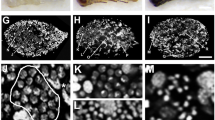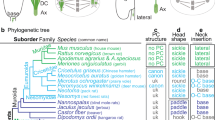Abstract
THE interpretation of the structure of the spermatozoa of cestodes and of the process of spermatogenesis is subject to wide divergence of opinion. In 1935 Young1 directed attention to the lack of knowledge regarding cestode structure and development, and among the main problems awaiting solution discussed the method of cell division and the structure of the sperm. Regarding the latter he wrote that “we have even less information than we have about most cestode tissues and until the spermatogenesis is known this ignorance will continue”. His observations2,3 and those of Child4 “suggest a very simplified structure correlated with rapidity of development and the production of enormous numbers of spermatozoa”1. Watson5 believed that the spermatozoon of Gyrocotyle is provided with a head. He did not, however, make a detailed study of spermatogenesis and described the sperm as “a slender thread tapering at the posterior end, with a well marked head, several times the diameter of the body”. In a description of a figure of two spermatozoa he mentioned head, tail and acrosome. Presumably the acrosome is a short threadlike structure figured at the anterior end of the head. Since the publication of Young's paper1 no further information on the spermatogenesis of cestodes has become available.
This is a preview of subscription content, access via your institution
Access options
Subscribe to this journal
Receive 51 print issues and online access
$199.00 per year
only $3.90 per issue
Buy this article
- Purchase on Springer Link
- Instant access to full article PDF
Prices may be subject to local taxes which are calculated during checkout
Similar content being viewed by others
References
Young, R. T., Trans. Amer. Microscop. Soc., 54, 229 (1935).
Young, R. T., Zool. Jahrb. Anat., 35, 355 (1913).
Young, R. T., Arch. Zellforsch., 17, 419 (1923).
Child, C. M., Biol. Bull., 12, 175 (1907).
Watson, E. W., Univ. Calif. Pub. Zool., 6, 353 (1911).
Sommer, F., and Landois, L., Z. wiss. Zool., 22, 44 (1872).
Leuckert, R., Die Parasiten des Menschen (1879–86).
Salensky, W., Z. wiss. Zool., 24, 291 (1874).
Sommer, F., Z. wiss. Zool., 24, 499 (1874).
Moniez, R., C.R. Acad. Sci., Paris, 87, 112 (1878).
Roboz, Z., Z. wiss. Zool., 37, 263 (1882).
Gresson, R. A. R., Irish Nat. J., 10, 308 (1952).
Gresson, R. A. R., Quart. J. Micro. Sci., 98, 493 (1957).
Gresson, R. A. R., Parasitol., 48, 293 (1958).
Gresson, R. A. R., and Perry, M. M., Exp. Cell Res., 22, 1 (1961).
Afzelius, B., J. Biophys. Biochem. Cytol., 5, 269 (1959).
Author information
Authors and Affiliations
Rights and permissions
About this article
Cite this article
GRESSON, R. Spermatogenesis of a Cestode. Nature 194, 397–398 (1962). https://doi.org/10.1038/194397a0
Issue Date:
DOI: https://doi.org/10.1038/194397a0
This article is cited by
-
A morphological and cytochemical study of sperm development inHymenolepis diminuta
Zeitschrift f�r Parasitenkunde Parasitology Research (1978)
-
The fine structure of spermatogenesis in Hymenolepis diminuta (Cestoda) with a description of the mature spermatozoon
Zeitschrift f�r Parasitenkunde (1977)
Comments
By submitting a comment you agree to abide by our Terms and Community Guidelines. If you find something abusive or that does not comply with our terms or guidelines please flag it as inappropriate.



